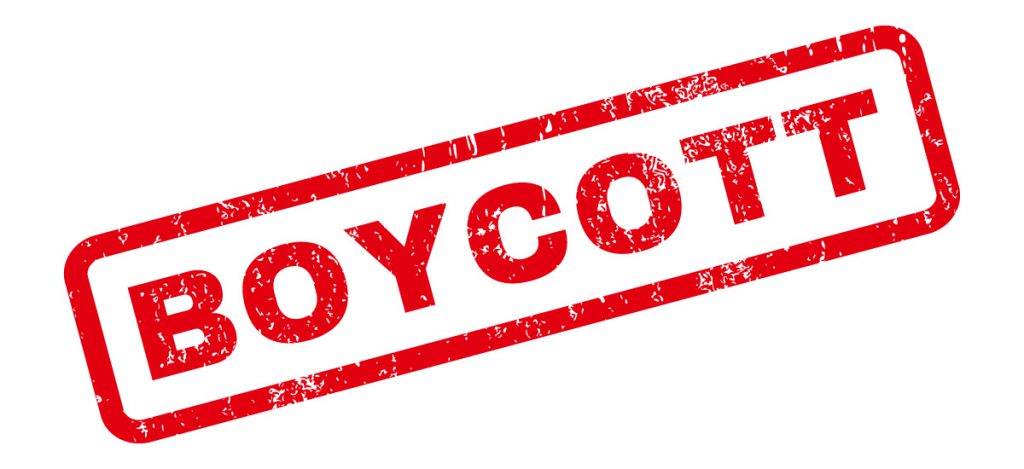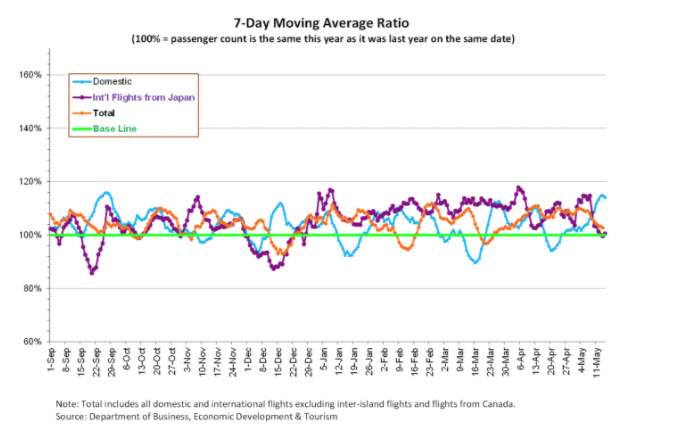It’s become almost automatic to #boycott a brand when they do something we don’t agree with. Social media gives consumers the power to spread their disapproval of a brand’s recent actions to people across the world. Do these boycotts actually have an effect on brands? What can PR professionals do to prepare themselves for a #boycott? Let’s take a look at some examples while we brainstorm solutions to the #boycott movement.
#BoycottHawaii
What happened?: Back in March, a federal judge in the beautiful state of Hawaii decided to go against President Trump’s recent travel ban. This caused an uproar on social media with people tweeting #BoycottHawaii.
Did it have an effect?: I’ll let you be the judge of this one. Even though one woman went as far as changing her flight itinerary, according to the chart below, Hawaii saw a steep climb in domestic tourists right around the time of #BoycottHawaii. Does this mean this boycott hashtag has the opposite effect or is it all one big coincidence?
#BoycottTarget
 What happened?: With one blog post, Target angered thousands of people across the United States. Last year, the company published a post that stated transgender customers were allowed to use whichever bathroom they felt most comfortable with. Cue the #BoycottTarget posts!
What happened?: With one blog post, Target angered thousands of people across the United States. Last year, the company published a post that stated transgender customers were allowed to use whichever bathroom they felt most comfortable with. Cue the #BoycottTarget posts!
Did it have an effect?: Absolutely. The company lost millions of dollars in sales as a result of this post. This was a huge hit for Target who saw steady growth over the past few years. To regain the support of their customers and find a middle ground for the problem, Target spent $20 million installing single-occupancy restrooms.
#DeleteUber
 What happened?: We all know Uber has been going through some tough times lately. After multiple scandals, #DeleteUber became a trending topic on almost all social media platforms.
What happened?: We all know Uber has been going through some tough times lately. After multiple scandals, #DeleteUber became a trending topic on almost all social media platforms.
Did it have an effect?: In some ways. While most people probably used the #DeleteUber hashtag to show their support without actually deleting the app, 200,000 people did. That’s definitely a significant loss, but Uber has over 40 million riders worldwide. One of the biggest threats to Uber was when the ride-share company surge charged people going to protest Trump’s travel ban at JFK airport. To put a band-aid over their wounds, Uber began looking into claims of sexism and sexual harassment claims seriously by hiring former Assistant Attorney General Eric Holder to investigate, and Uber president Jeff Jones stepped down after accusations of harassment. Most recently, Uber CEO Travis Kalanick resigned. Bloomberg even created a few charts to help us understand the ever-changing landscape of the Uber management team. Interesting, isn’t it?
What does the #boycott movement mean for PR professionals? It’s more important than ever to make sure your client is prepared with a statement supporting their decisions. Or if they feel like they’ve made a mistake, make sure the statement explains why they made the decision in the first place and what they are doing to fix the issue. Consumers want to know their voices are being heard and changes are being made.
Did you #boycott a brand recently? Let us know in the comments or tweet us @BIGfishPR!


